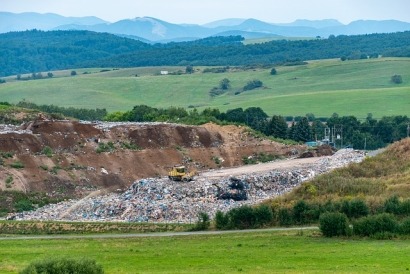
The pilot project will reduce greenhouse gas emissions, while generating revenue to subsidize Viridi's investment in building a state-of-the-art RNG facility at the landfill. Viridi expects that the RNG facility – which will produce the equivalent of three million gallons of gasoline annually – will be fully operational by the second half of 2024.
"Unlike traditional offtakers of landfill gas, Vespene's technology solution brings revenue-generating, energy-efficient data centers onsite and is immediately deployable and highly scalable," said Vespene Energy co-founder and CEO Adam Wright. "This enables municipal landfill operators to monetize an otherwise stranded asset while reducing harmful greenhouse gas emissions quickly and economically."
"Viridi is proud of the immediate environmental benefit that our partnership with Vespene will produce," said Viridi Chief Executive Officer Dan Crouse. "This pilot project serves as an important bridge. It will capture and convert the methane produced by the landfill's gas collection and control system, while we build our industry-leading RNG facility at this site over the months ahead. It is a win for the Marathon County community and for our planet."
Decomposition of landfilled municipal solid waste produces methane and other gasses, which Marathon County Landfill collects and flares to high percentage destruction levels per local, state, and federal regulations. However, there are over 1200 landfills in the U.S. that do not have flares in place. The greenhouse gas methane is 84 times more potent than carbon dioxide in the first twenty years after release.
Recent research indicates that methane emissions from landfills may be higher than previously realized. According to the EPA, U.S. landfills account for 15% of U.S. methane emissions, but a 2019 NASA survey indicates these numbers may be two to three times higher than previously reported.
Due to the high costs and long lead times associated with building grid-connected landfill energy projects, over 70% of the country's roughly 2,600 municipal landfills do not have a viable use for the methane they produce.
Vespene's unique technology solution enables operators of unregulated landfills to get ahead of pending EPA mandates to reduce methane emissions, and for regulated landfills to have an alternative emissions destruction method that produces a revenue for the landfill rather than simply flaring. Vespene's integrated data processing approach provides a near-term revenue stream that serves as a bridge to grid interconnection, where sites can then participate in the EPA's new Renewable Fuel Standard Program pathway for e-RINs.

